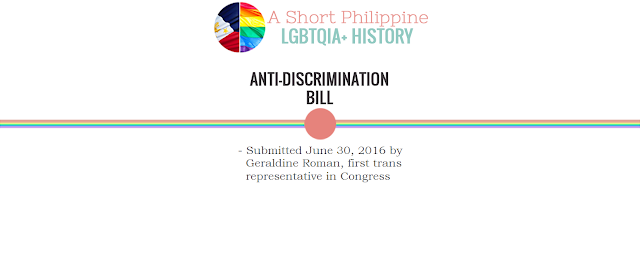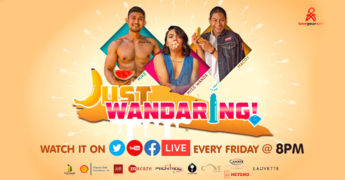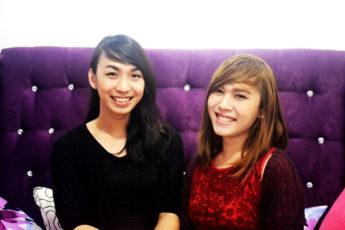This month of June marks a significant event within the LGBTQ+ community around the world. It was in June 1969 when the Stonewall Riot in Manhattan, New York ultimately turned the tides in the Gay Liberation Movement in the United States, which is why the world celebrates LGBT Pride in the month of June1.
Filipino LGBT youth today may not be aware of the history of a community where they belong. Within the Philippines’ conservative culture, the community’s roots have long been ignored by many. As such, let us take a quick look at the history of the LGBT movement in the Philippines, from its indigenous conceptualization to today’s advocacy for the anti-discrimination bill.
The first account of women and gender crossing men playing major roles in the Philippine society was the Babaylan, a priestess who was a bounty of knowledge and spirituality. The babaylan even had the power to take charge of the barangay (community) in the absence of the datu (community leader). There were some babaylan who were male called asog, who were free to have homosexual relations without societal judgement. The asog were not cross dressers, however. They were gender crossers as they were granted the same spiritual recognition as the female babaylan. The asog lead the revolts against the oppression of the Spanish colonial period with various incantations to boost the revolt’s strength.2 3 4
During the 300 year Spanish colonization of the Philippines, a change in ideology was imminent. From the indigenous matriarchy, the Spanish introduced the patriarchy and the machismo concept which made gender crossing a ridiculed practice. It was not long until even effeminate men were also looked down upon, developing regional vernacular for what the Tagalog call bakla (gay man, also meant confused and cowardly). The American colonization period further reinforced of Western conceptualizations of gender and sexuality, cementing it in formal education.4
Well after the Second World War, gay rights activist Justo Justo established the Home of the Golden Gays in 1975. Originally intended to serve as a home for elderly gay men who have been kicked out by their families, mostly due to their lack of financial contribution. It has grown into a loving community composed of vibrant and unique individuals. Unfortunately, the death of Justo in 2012 led to the closing of the home.5
The women’s movement in the 1980s was a highlight in the struggle of the lesbian community to be visible in the public. The lesbian community has felt invisible and ignored in the past few decades. With lesbian concerns being subsumed under women’s and feminist studies which was previously heterosexual in nature, and under the gay movement which previously prominently conceptualized lesbian women as female version of homosexual men. As such the lesbian community wanted their voices to be heard in the fight against the dictatorship. Eventually, the underground women’s organization MAKIBAKA released a position paper including sexual orientation issues in the movement. Later in the 1990s the issue of gender and sexuality became a major concern in the women’s movement, leading to the formation of The Lesbian Collective, LESBOND, the media advocacy group Can’t Live in the Closet, and the first National Lesbian Rights Conference.6
One of the more memorable moments in the history of the LGBT movement in the Philippines was the first LGBT Pride March on June 26, 1994 to commemorate the 20th anniversary of the Stonewall Riot. The march was not only the first gay pride march in the Philippines, but in Asia. This event was organized by the Progressive Organization of Gays in the Philippines (PROGAY Philippines) and the Metropolitan Community Church (MCC) Manila. The march was small in number, with 60 participants in fact. As they marched from EDSA at Quezon Avenue to Quezon Memorial Circle in Quezon City, it was the first time for the public to see members of the LGBT community speak out for equality at such a scale.7
More recently, the Psychological Association of the Philippines (PAP) released the LGBT Non-discrimination Policy Resolutionin October 2011. This was in response to overwhelming letters, calls, and ethics complaints against a certified psychologist who recommended conversion therapy for children who come out as gay or lesbian to achieve a “happy family life”. This policy statement affirmed the inherent dignity and equality of LGBT individuals as well as the right to not be discriminated against based on their sexual orientation, gender identity and expression. This resolution also reinforced the American Psychiatric Association’s position in 1973 viewing same-gender sexual orientations as healthy, non-disordered variant of human sexuality, love, and relationships. The resolution was later translated to Tagalog in November, 2014.8
Today, we enjoy the benefits of what our past brothers and sisters have done for the future of LGBTQ+ visibility and rights. However, there is still much to do to achieve equality. Currently, there are are no comprehensive anti-discrimination law in the Philippines. Some existing Philippine laws are sometimes used to extort LGBT members while some out right limit gender expression and ignore gender identity in work environments.[9] Fortunately on June 30, 2016 the first transgender representative in the congress, Geraldine B. Roman submitted House Bill 267, otherwise known as the Anti-SOGI Discrimination Act, and is currently up for approval.[10] Beyond laws and policies, the ordinary members of the LGBTQ+ community play a significant role in this vision of equality – to remain visible and fight the stigma.
Text by Carlos Diego A. Rozul
Image by Juan Pablo Diaz
References:
1 https://www.loc.gov/lgbt-pride-month/about/
2 http://www.bagongkasaysayan.org/downloadable/zeus_001.pdf
3 https://books.google.com.ph/books/about/Philippine_Gay_Culture.html?hl=tl&id=93lag7tXriIC
4 http://iias.asia/sites/default/files/IIAS_NL35_13.pdf
5 https://thegoldengays.wordpress.com/about/
6 http://www.journals.upd.edu.ph/index.php/kasarinlan/article/viewFile/1077/1109
7 http://www.fridae.asia/gay-news/2009/06/08/8419.the-first-gay-pride-march-in-asia
8 https://www.researchgate.net/publication/301807803_LGBT_psychology_in_the_Philippines
9 https://www.usaid.gov/sites/default/files/documents/1861/2014%20UNDP-USAID%20Philippin es%20LGBT%20Country%20Report%20-%20FINAL.pdf
10 http://www.congress.gov.ph/legisdocs/basic_17/HB00267.pdf







